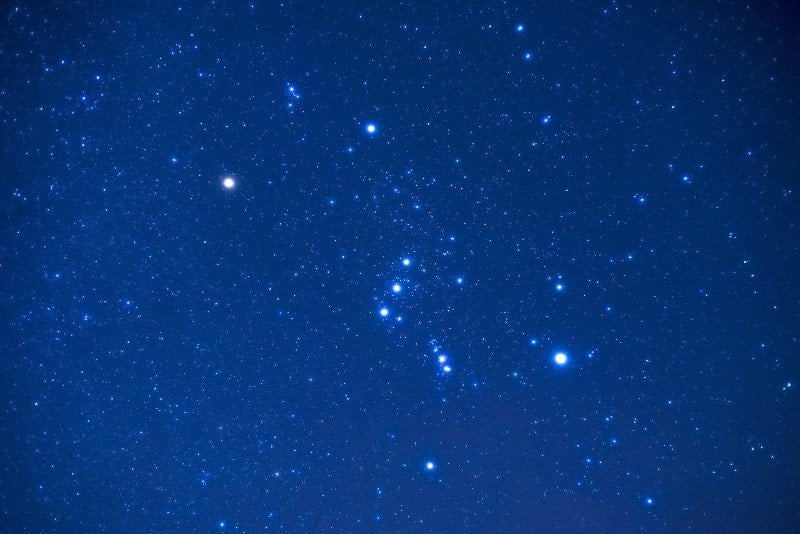
Orion: The Celestial Hunter Across Cultures
Oracle SothisOrion, a prominent constellation known for its striking configuration, has held a position of profound mythological and cosmological significance across ancient and pre-modern civilizations. While its form is universally recognizable, the interpretations of its meaning and function within cosmic frameworks exhibit considerable diversity and complexity. Rooted in the archaic celestial consciousness, Orion has been variously understood as a hunter, a warrior, a god, and a primordial archetype of power and transcendence. In examining Orion's multifaceted presence across cultures, one must consider the constellation’s astronomical prominence, its integration into ritual calendars, and its dynamic relationship with other star clusters, notably the Pleiades.
In Hellenic tradition, Orion is immortalized as a gigantic hunter, famed for his unparalleled prowess and tragic demise. The most pervasive myth recounts Orion’s boast that he would exterminate all wild beasts on earth, inciting Gaia’s wrath and prompting her to send a deadly scorpion to kill him. In another variant, Artemis herself is persuaded or tricked into striking him down, either out of jealousy or through divine intervention. Posthumously, he is transformed into a constellation, eternally pursuing the Pleiades across the sky. This perpetuation of the hunter’s pursuit echoes themes of unfulfilled desire and tragic consequence, reflecting a cosmological model where transgression and hubris necessitate divine retribution. Orion’s figure thus embodies both human ambition and cosmic justice, forever striving but never attaining his objective.
The constellation's significance within Egyptian cosmology is markedly different, grounded in a soteriological framework where Orion represents Osiris, the god of the afterlife and resurrection. The three stars constituting Orion’s Belt—Alnitak, Alnilam, and Mintaka—align with the pyramids at Giza, mirroring the terrestrial manifestation of divine order. In this sacred topology, Orion’s rising and setting correlate with the annual rebirth of the Nile, symbolizing the resurrection of Osiris and the cyclical rejuvenation of the land. This alignment is not coincidental but a deliberate reflection of the principle of "As above, so below." Ritual texts from the Pyramid Age demonstrate that the soul of the deceased Pharaoh was believed to ascend to the stars of Orion, thereby joining the immortal company of Osiris. This celestial assimilation conveys the Egyptian concept of eternal kingship and the transcendence of mortality.
Indigenous American traditions also attribute profound symbolic weight to Orion. Among the Lakota Sioux, Orion represents a great warrior whose stance and posture signify vigilance and protection. The pattern of the Belt stars is interpreted as a bow or a weapon, serving as a guardian figure in the celestial expanse. For the Navajo, Orion's Belt is part of a sacred constellation called "The Black God," linked with fire and creation. Its heliacal rising marks significant ritual observances, integrating stellar phenomena into the seasonal and ceremonial rhythms of life. The association of Orion with both protection and danger reflects a complex ontology where celestial patterns are both omens and guardians.
In ancient Mesopotamia, Orion was associated with the hero Gilgamesh or the warrior Ninurta. As a divine hunter and protector, he symbolized martial valor and the safeguarding of cosmic equilibrium. Textual evidence from cuneiform tablets indicates that Orion’s appearance heralded not only military campaigns but also seasonal transitions. His battle with the celestial bull, represented by Taurus, underscores the archetypal conflict between opposing forces, a motif resonant within both mythology and ritual praxis.
In Mesoamerican astronomy, the constellation was known among the Maya as the “Three Hearthstones,” representing the cosmic hearth from which creation emerged. Positioned centrally within the celestial sphere, Orion’s Belt delineates the primordial hearthstones of the universe, serving as a metaphysical center around which the cosmos is organized. This association with creation and foundational order reflects a mythopoetic structure in which cosmic stability is continually reaffirmed through ritual observance and astronomical alignment.
Thus, Orion emerges not merely as a constellation but as a dynamic locus of mythic, ritual, and cosmological significance. Its characterization as a hunter, warrior, god, or foundational figure varies across cultural contexts, yet consistently, it embodies the fundamental themes of struggle, transformation, and cosmic balance. The constellation’s persistent pursuit of the Pleiades across the night sky allegorizes the unrelenting human quest for transcendence—a journey marked by ambition, conflict, and the inexorable rhythm of the cosmos. In this light, Orion becomes both a reflection of human striving and a manifestation of the immutable laws governing the celestial order.
